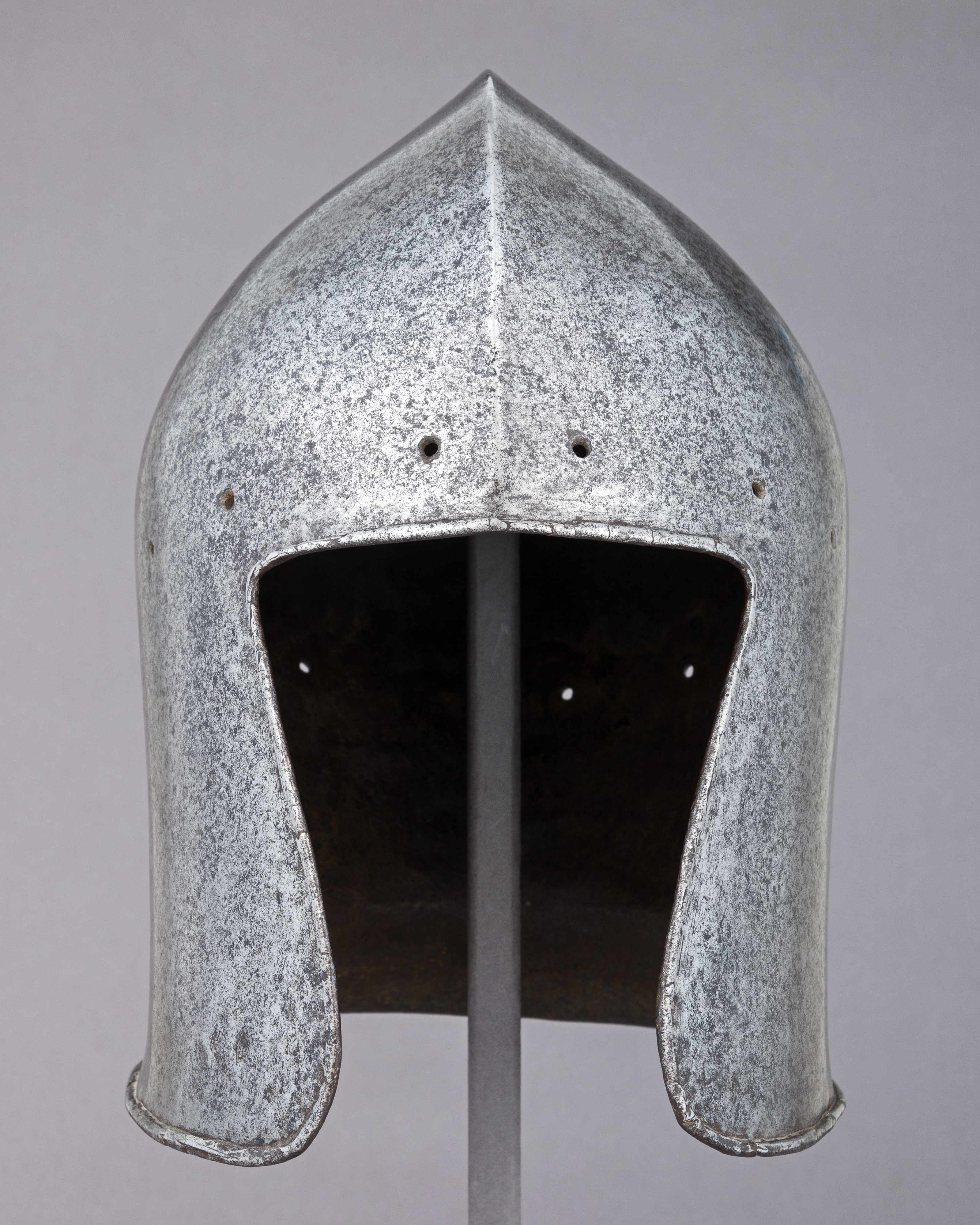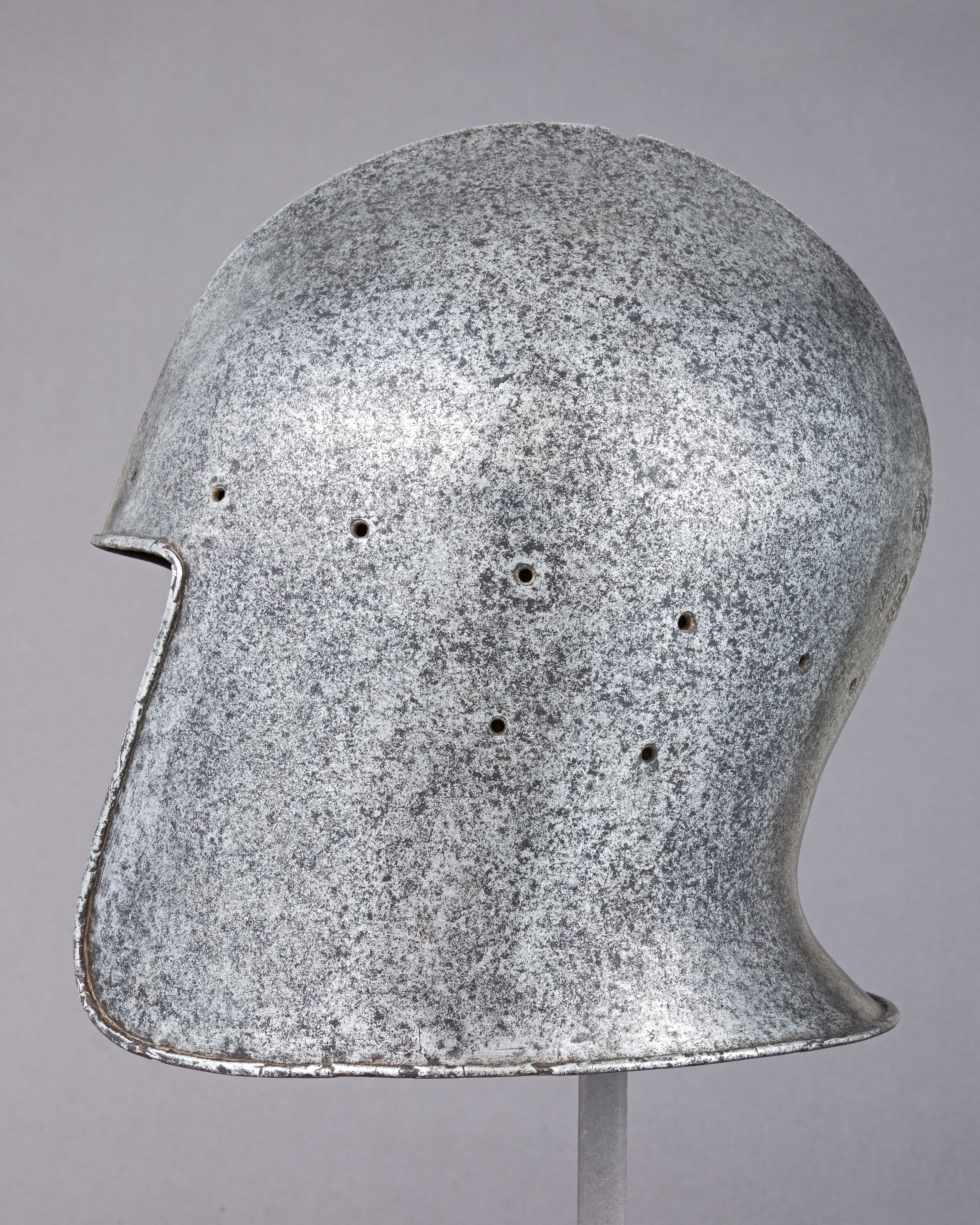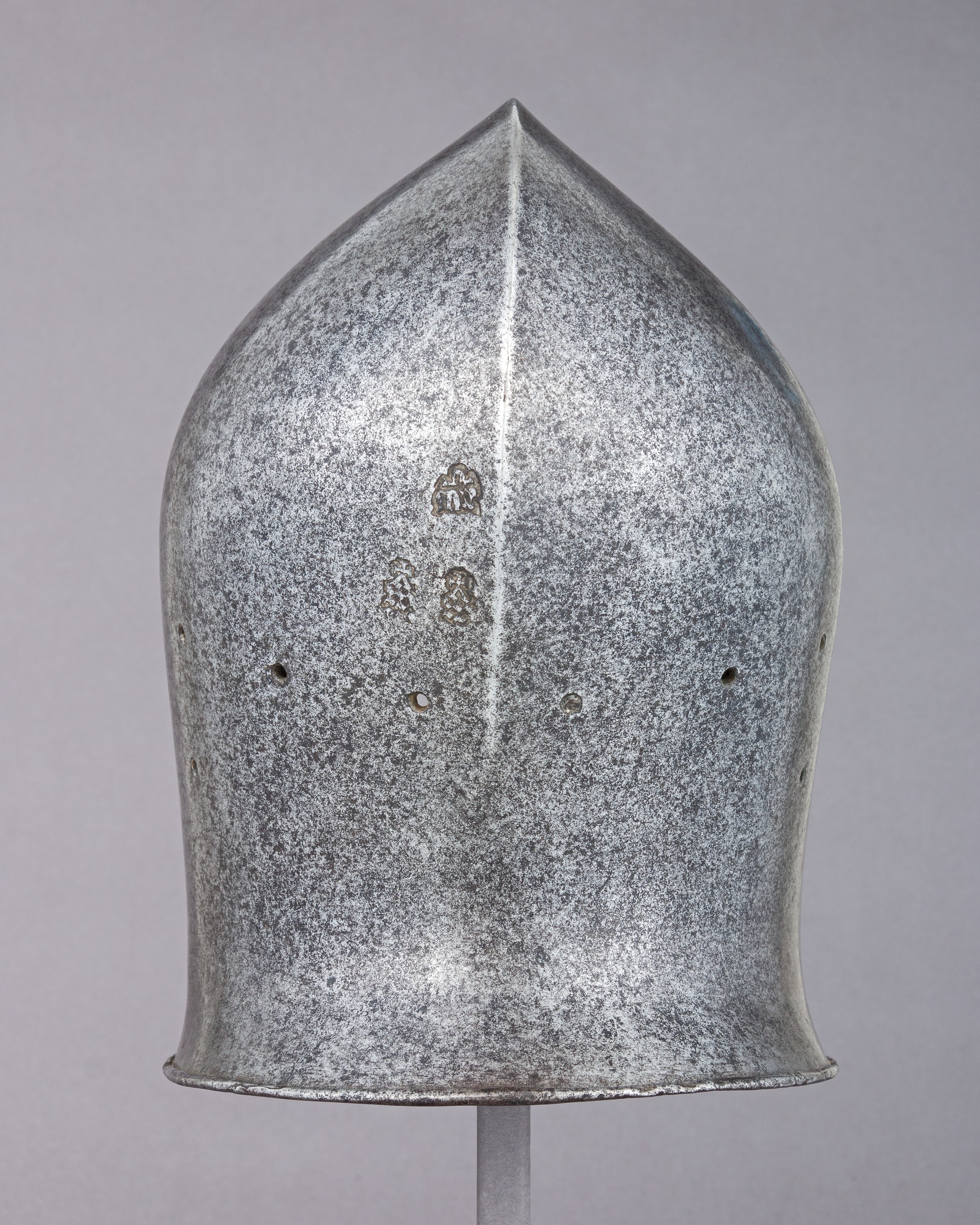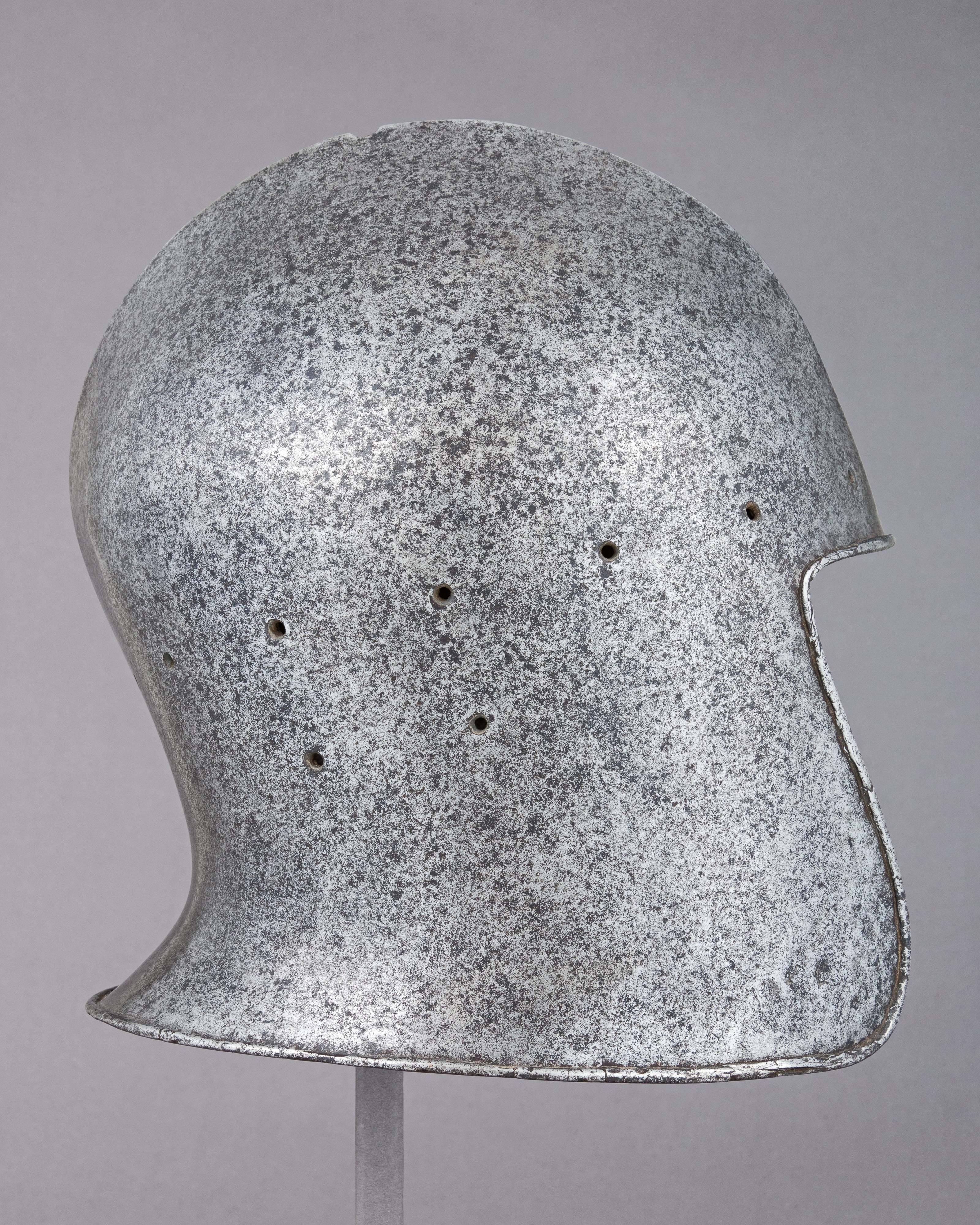Barbute
By the end of the thirteenth century, the armor-producing cities of northern Italy had gained an international reputation and were exporting arms and armor throughout Europe. Milan was preeminent through the sixteenth century, followed by Brescia. The greatest Milanese armorers were members of the Missaglia family, a dynasty of merchant-armorers active from the late fourteenth to the early sixteenth century. During the fifteenth century, the Italians perfected complete armor of plate. Probably developed in Milan around 1400, it covered the wearer from head to foot. The advanced technical and stylistic features of Milanese armor influenced local craftsmen wherever it was exported. Thus, in the fifteenth century, armors worn across western Europe from Spain to Flanders displayed Italian characteristics. Thriving local centers of armor-making were found at Burgos and Calatayud in Spain; Paris, Tours, and Lyons in France; and Arbois in Burgundy.
Due to rights restrictions, this image cannot be enlarged, viewed at full screen, or downloaded.
This artwork is meant to be viewed from right to left. Scroll left to view more.






